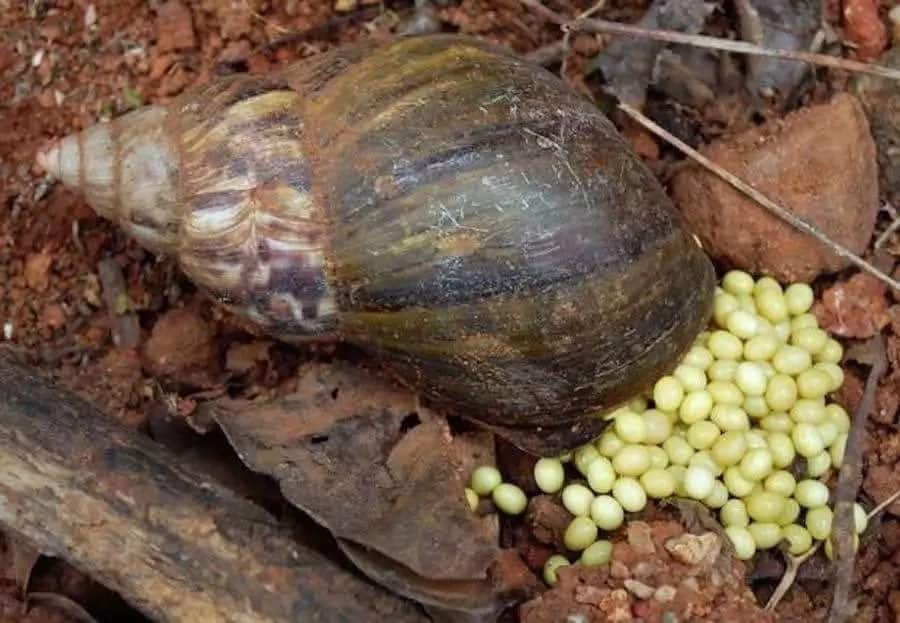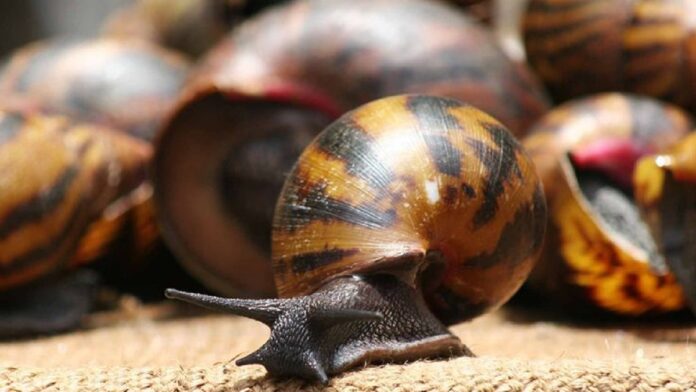Snails have high nutritional value. In West Africa and Ghana, snails for human consumption are mostly acquired from the wild and during the rainy seasons. However, due to over-collection and/or ecological changes, the wild snail population has been reduced. It is therefore important to encourage snail farming (heliculture) to conserve this resource and also to sustain its supply in both the local market and for export throughout the year.
A. Why Grow Snails?
- For food, snail meat contains 60%–61% dry weight of good quality protein and appreciable quantities of potassium and phosphorus. It is a good source of vitamins B and C.
- Source of Income: Snails are in high demand both locally and abroad. T
- Health benefits: Certain chemical substances in snails cure hypertension, stomach ulcers, anaemia, etc.
- Offal and droppings are good to be used as manure on crops.
- Snails’ natural activities help to conserve the natural environment.
- Snail meat has aphrodisiac properties, ie, it provides vitality in men.
Read also: 6 Super Health Benefits of Snail, But…
B. Types and Geographical Occurrence
There are 3 types of snail farming;
- Freshwater snail
- Marine snail
- Land snail
In Ghana, five species of snails have been identified;
- Nwapa –the giant snail (Achatina achitina)
- Pobere – the big black snail (Achatina maginata)
- Tarkwa nwa – white-fleshed snail (Achatina degneri)
- Sefwi nwa – Garden snail (Achatina fuliica)
- Nkonkon nwa (Limicolaria martensis)
C. System of Snail Farming
Two main systems of snail farming;
- Indoor – Here temperature and humidity are controlled and practised at a high cost.
- Outdoor
- Shed System – Snails are kept in cages or hutches and kept under sheds or shades.
- Pasture System – snails are kept on established mini paddocks with fast-growing food and shelter plants.
D. Housing/Soil Requirements
- Cages: constructed with any low cost but durable material, e.g. bamboo, raffia sticks, sawn timber, bush sticks, bricks, wire mesh, nylon mesh, etc.
- Paddocks: fence area with bamboo, raffia sticks, blocks or bricks, and grow fast-growing food and shelter plants like plantain/banana, cocoyam, pawpaw, etc.
Construction of snail cages
In snail farming, always remember to;
- Prevent snails from escaping in commercial snail farming.
- Prevent entry of enemies.
- Prevent heat.
- Use any of the above-listed materials to construct cages. Cages may be single, double, or multiple-storey.
E. Stocking
Breeding stock: 10-20 Snails (100-150g)/m2
Fattening Stock: 100 Snails (15-20g) /m2
Stocking Precautions
- Do not stock snails with cracks on the shell (may die or cannot breed or be fattened).
- Stock well to build healthy snails.
- Avoid snails with pale or white skin.
- Snails in aestivation should be avoided.
When Stocking
- Introduce snails into the pen in the evening to correct the stocking rate.
- Observe the positions of individual snails and check activeness the next morning.
- Sprinkle water after stocking.
F. Feeds / Feeding
- Do not scatter feed in a snail pen.
- Always put feed in front of pen to facilitate easy cleaning and refeeding.
- Snails do very well on a variety of feeds including;
Leaves
Pawpaw
Cassava
Okra
Eggplant
Lettuce
Cabbage
Centrosema
Potato
Kola
Bokoboko (Talinum)
Cowpea
Spinach
Canna Lilly
Leucaena
Sunflower
Groundnut
Fruits
Pawpaw
Mango
Banana
Pear
Eggplant
Palm fruit
Fig
Tomatoes
Cucumber
Plantain
Orange
Pineapple
Watermelon
Breadfruit
Roots/Tubers
Cassava
Yam
Sweet potato
Taro
Flowers
Odwuma
Pawpaw
Oprono
Source of calcium
Oyster shell
Eggshell
Limestone
G. Watering
Snails drink a lot of water.
- Provide water on a flat plastic plate.
- Use the bottom of the plate to make a hole to sit the plate in the soil.
- Sprinkle water on snail feed and snail each time you feed.
H. Sexual maturity/Mating
| Type | Sexual maturity | |
| 1 | Achatina achatina | 8 – 9 months |
| 2 | Achatina Maginata | 12 – 15 months |
| 3 | Achatina fulica | 5 – 6 months |
Mating
Snails are hermaphrodites (each has both sexes). However, they require mating between two of them to enable fertilization to take place.
I. Laying/Hatching
- 28–30 days after mating, the egg is matured/fertilized for laying.
- Snails lay eggs under the soil about 5 cm under leaf litter.
- Snails lay batches of eggs in a year.
- Hatching takes 12 – 20 days.
| Type | No. of eggs | |
| 1 | Achatina achatina | lays 100 – 400 eggs/clutch |
| 2 | Achatina Maginata | lays 4 – 6 eggs/clutch |
| 3 | Achatina fulica | lays 100 – 600 eggs/clutch |

Read also: Types of Snails for Commercial Production
Artificial Incubation
- Fill a container (perforated all over) with sterilized soil.
- Scoop mid-portion of soil (about 5 cm), put in egg and cover.
- Sprinkle water over it and keep it in a cool place.
- Hatch in 12 – 20 days.
J. Care of young
- Handle newly hatched snails with extra care as they are delicate and have very tender shells.
- Put them in a nursery / Juvenile pen
- Feed succulent bokoboko, kontomire, pawpaw leaves and fruits powdered oyster shell and water.
- As they grow, move them into grower pens and then into flattening pens at the correct stocking rate.
K. Sanitation
- Sterilize soil before use.
- Remove dead snails from the cage immediately.
- Remove uneaten food to prevent fungal build up.
- Burn all suspended contaminants.
- Prevent diseases build up, pests, parasites etc.
L. Enemies of Snails
Some natural enemies of snails
- Rat, Lizard, Centipede, Carabid and Larva
- Other enemies include; Frog, Millipede, Mice, Crows, Bluebottle fly, Driven ants, Snake, Man.
Diseases: Bacterial and fungal cause intestinal disorder
Control: a. Good Sanitation
b. Use nylon mesh to control both flying and non-flying pests.
M. Marketing
Snails can be marketed in all marketing centres in Ghana except in the Northern, Upper East and West Regions.
Through the Ghana Export Promotion Council (GEPC), snails can be exported to; Australia, Canada, Belgium, Denmark, Germany, Japan, Netherlands, South Africa, Sweden, Switzerland and USA.


